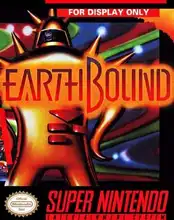Step into a world of forgotten pixels and epic quests! For many of us who grew up with a joystick or keyboard glued to our hands, the Role-Playing Game genre wasn't just a game – it was an escape hatch to entire universes. Before photorealistic graphics and open worlds the size of continents, these games captured our imaginations with deep stories, memorable characters, and the simple, addictive thrill of watching our heroes grow.
But what exactly is a Role-Playing Game, and why do these old digital sagas still hold such a powerful grip on our nostalgic hearts? Let's pull up a chair, maybe fire up DOSBox, and take a trip back.
What Exactly Is a Role-Playing Game?
At its core, a Role-Playing Game (or RPG) is about stepping into the shoes of a character (or a party of characters) and guiding them through a narrative-driven adventure. Think of it as a digital evolution of tabletop games like Dungeons & Dragons, where a Dungeon Master sets the scene and players decide their actions.
In video game form, the computer takes on the DM role, presenting you with challenges, characters to interact with, and a world to explore. The defining features usually include:
- Character Progression: Your character(s) get stronger over time, often by gaining experience points (XP) from defeating enemies or completing quests. This leads to "leveling up," which grants new abilities, better stats, or access to more powerful gear.
- Story and World: RPGs are usually built around a central plot, often involving saving the world, defeating a great evil, or uncovering a mystery. The setting is crucial, whether it's a high-fantasy realm, a sci-fi galaxy, or a post-apocalyptic wasteland.
- Quests: Beyond the main story, there are typically side quests – smaller tasks that flesh out the world, reward you with loot or XP, and give NPCs more personality.
- Exploration: Wandering through towns, dungeons, forests, and caves is a big part of the appeal, often revealing hidden secrets, powerful items, or new story beats.
- Items and Inventory: Managing equipment, potions, scrolls, and mountains of loot is standard. Finding that legendary sword or a piece of armor that boosts your stats was always a highlight.
The Heart of the RPG: Story, Setting, and Quests
Back in the day, when graphics were simple sprites or chunky 3D models, the story had to do a lot of the heavy lifting. Games like Ultima, Wizardry, and later Baldur's Gate on PC, or Final Fantasy and Dragon Quest on consoles, drew us in with compelling narratives and rich lore.
Remember spending hours talking to every single NPC in a town, just in case they had a vital clue, a funny line, or a side quest offering some much-needed gold? Dialogue trees were our windows into the souls (or at least the programmed responses) of the digital inhabitants. Completing a tricky side quest felt just as rewarding as advancing the main plot, often providing unique rewards or opening up new areas.
Growing Your Hero: Experience, Levels, and Loot
The progression loop is arguably the most addictive part of any Role-Playing Game. Starting as a relative nobody and slowly building your character's power is incredibly satisfying. Defeating a tough monster because your character finally hit that new level, learning a powerful spell, or equipping that shiny new piece of armor you just found in a dungeon chest – that was the good stuff.
Inventory management could be a mini-game in itself! Deciding which potions to carry, whether to keep that slightly better but much heavier weapon, or if you had enough space for all the vendor trash you picked up. It added a layer of strategy beyond just combat.
Turn-Based Tactics or Real-Time Rush?
While modern RPGs often lean towards action-oriented combat, many classic Role-Playing Game experiences were turn-based. Think of the structured battles in early Final Fantasy games or the strategic grid combat in Wizardry. This style demanded careful planning, understanding enemy weaknesses, and managing your party's abilities.
Then there were games that blended things or went more action-focused, like Diablo (though often considered an Action RPG) or later The Elder Scrolls titles. Both styles offered different thrills, but the core idea of using your character's developed abilities to overcome challenges remained the same.
Why These Old Worlds Still Matter
These classic Role-Playing Games laid the groundwork for so much of what we play today. Their focus on character growth, narrative, and player choice (even if limited by the tech of the time) created experiences that stuck with us.
Today, you can revisit many of these foundational titles. Platforms like GOG (Good Old Games) offer DRM-free versions of classics, often pre-configured to run on modern systems. The Internet Archive also hosts many vintage PC games playable right in your browser, including some early RPGs. Firing them up can be a fantastic trip down memory lane, reminding you why these digital worlds captured our hearts decades ago and continue to influence games today.
They weren't just games; they were adventures that let us be the hero, one level-up at a time.
FAQ
Q: What's the main difference between a classic RPG and a modern one? A: While core elements like story, progression, and quests remain, classic RPGs often had simpler graphics, more rigid turn-based combat, and less open-ended worlds compared to many modern AAA titles.
Q: Where did the idea for video game RPGs come from? A: Video game RPGs directly evolved from tabletop role-playing games like Dungeons & Dragons, borrowing concepts like character stats, experience points, levels, and fantasy settings.
Q: Are turn-based RPGs still made today? A: Absolutely! While action RPGs are popular, many indie and even some major studio games continue to use or incorporate turn-based combat systems, proving their enduring appeal for strategic gameplay. For example, classic console RPGs on systems like the NES and SNES heavily featured turn-based combat.

